Browse Exhibits (27 total)
Animal Art in Everyday Objects of the Northwest Coast
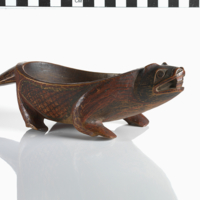
Artistic depictions of animals in commonly used objects of the Northwest Coast represent the importance of the symbiotic relationships between people and animals. Art forms use animal designs to represent individual experiences and social prestige. Many of these art forms as we know them are heavily influenced by European settlement changing the demands of the market for these objects.
Authorship and Authenticity in Literature Depicting Native North Americans
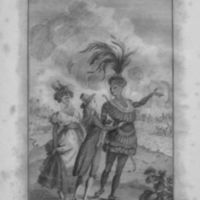
Although questions pertaining to authorship and authenticity are often necessary when analyzing any form of literature, these issues are of utmost importance when examining literature depicting Native North Americans. In this exhibit, looking at poetry, songs, legends and myths presented either as fictional or as "collections" pertaining to particular Native groups, I will consider questions such as: What constitutes an "Indian" or "Native American" author? How does a non-Native collaborator avoid a colonizing relationship to Native American texts? (Lewdon 1997, 579) Finally, how do works tied to Indigenous traditions challenge simplistic notions of authorship? (Roemer 1991, 10) Although answering these questions adequately is beyond the scope of this exhibit, the works included certainly shed light on the fact such questions regarding Indian authorship go beyond blood and background to include matters of audience, language, form and topic (Roemer 1991, 15).
People of the North and their Tools

The Northern Artic People and the tools they used to survive. Conditions in these areas were brutal and the people who lived in these areas had to adapt and create tools that could survive the harsh enviroments. Tools were created for the prupose of hunting and weather. The enviroment that the Artic and sub-Artic people lived in shaped their tools and their survival methods.
Self-Representation Through Architecture at the National Museum of the American Indian
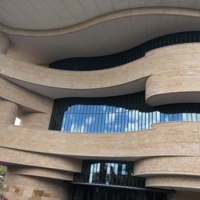
The National Museum of the American Indian (NMAI) is the first national museum funded, planned, and curated by Native people. This allowed for Native voices to be at the forefront of every aspect of the NMAI, notably the architecture of the building. Through conversations with Native people and the inclusion of Native values, such as nature and stewardship of the land, the architecture of the National Museum of the American Indian is the initial site of self-representation in this institution.
Through A Non-Native Lens: Photography and Representation of Indigenous People

The portrayal of Native Americans in photographs from the late 1800's and through the 1900's are highly romanticized. The photographs implies the loss and extinction of Indigenous culture. Stereotypes and narratives of Indigenous people were enforced through photography by non-Natives.
Tobacco - Then and Now
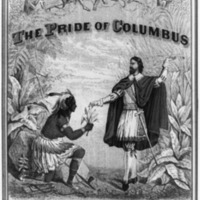
Tobacco products are able to be purchased at nearly any gas station or drugstore across the country and all over the globe. It is no secret that the drug nicotine has the ability to foster life-long addiction and countless health changes, but it has managed to live a long life on the shelves, ready to be bought by anyone age-permitting. There is a certain stigma surrounding the use of the still familiar substance and its relation to the Native Peoples who are seen as the originators of the practice. Interestingly enough, their experience that was curated with the use of tobacco is extrordinarily different than your average "smoke break."
Here, we take a brief look at the traditions surrounding tobacco in Native culture and the representations of it today.
Native American Representation In Film
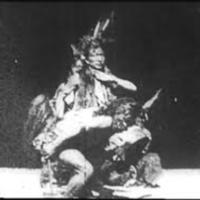
Native Americans have been displayed within motion pictures since as far back as the late 19th century during the earliest stages within cinematic history. Through this technologic medium, Indigenous people have been portrayed within numerous films over a span of time that has lasted over 120 years; however movies and televisions have proven to be detrimental in regard to the greater public image of Native American communities, as filmmakers spread and maintained racist stereotypes concerning Indigenous people through their works. Nonetheless, films and television have also in recent years been used by both Indigenous and non-Indigenous filmmakers as a tool to portray Native Americans more accurately, along with using films as a platform to raise awareness in regard to problems that currently plague Indigenous communities.
Education of Native Students: A Journey from Boarding Schools to Today
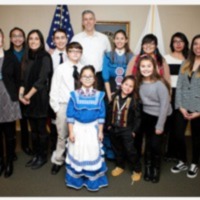
While thinking of Native American’s in the classroom many people think of the old boarding schools from the 19th and 20th century. Others have memories of creating some type of teepee in their own schooling. There tends to be nothing else that comes to mind. There is clearly something missing in our school system, as there is a lack of the true Native American history or representation. Native Americans are a big part of this nations history. They also make up a percentage of the country’s student body. So why are they missing form the classroom? Throughout this website I will examine where Native Americans are in the school system. This will include looking at students who identify as Native American and teaching surrounding these populations.
Hunting: A Retrospective of Indigenous Human-Animal Relationships

Through this exhibition, we will tend to examine the Indigenous human-animal relationships through the practice of hunting, which was very central to various aspects of the Indigenous culture. We will focus on the culture of the Plains Indians, understanding how hunt operates as the economic and social activity, but also a crucial ontological statement.
POLICY, PROFIT, IDENTITY, AND AUTHENTICITY
Photography is a powerful medium.
The following exhibit first explores underlying motivations and ideologies underlying the work of Edward Curtis.
The issue of identity and authenticity is then explored through the examples of two portraits of Alexander Upshaw, an Apsaroke man who worked as a fieldworker and interpreter for Edward Curtis.